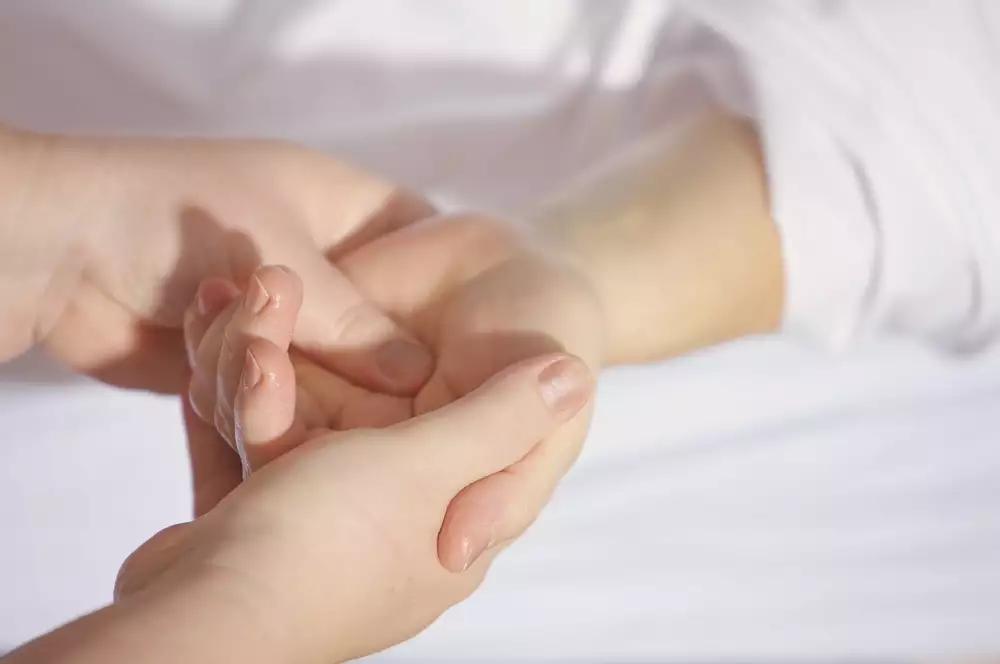Synechiae: When the skin connects and affects our health

Synechiae, often referred to as skin binding, is a condition that affects many people and can be very restrictive. It is a condition in which the skin on certain parts of the body fuses together to form an immobile ligament. This condition often affects areas such as the hands, feet or genitals. Synechiae can be caused by trauma, burns or infections. In this context, it is important to seek medical attention and ensure adequate treatment.
Definition of synechiae
Synechiae is a medical term that describes a condition where the skin of certain parts of the body fuses together to form a bond. Synechiae can be present, for example, between the eyelids, on the genitals or on the lips. This phenomenon can be caused, for example, by postoperative healing or inflammation of the skin. Synechiae can be problematic due to the limited mobility of the skin in the area and can lead to various complications. It is therefore necessary to monitor this condition and address it medically if necessary.
Causes of synechiae
Synechiae are bindings of the skin that occur primarily in the eyeball area. Their causes can be varied and differ depending on where they are located on the body. The main causes of synechiae include post-traumatic conditions, eye infections or inflammation. Synechiae can also arise as a complication of surgical procedures or as a result of improper contact lens use. Another factor that can lead to synechiae is chronic diabetes mellitus. All these factors can lead to adhesions between the skin and other tissues, which can adversely affect the movement of the eyeball and cause vision problems or even headaches.
Projects and symptoms of synechiae
Synechiae are pathological connections between the skin and surrounding tissues that can be caused by a variety of factors. Manifestations of synechiae include limitation of mobility of the affected area of the skin, soreness, redness and swelling. Symptoms of synechiae can occur on any part of the body, but are most commonly found on the face, neck and arms. Synechiae can also lead to impaired blood circulation in the affected areas, causing degenerative tissue changes and muscle atrophy. If the presence of synechiae is suspected, the patient should seek medical attention and undergo an examination to determine the extent of their effect on the body's health.
Diagnosis of synechiae
Synechiae are bindings of the skin that occur when the skin is injured or inflamed. These ligaments can be benign or malignant and can have various manifestations such as itching, pain or redness. Diagnosis of synechiae is made by physical examination and possibly also by laboratory tests. Treatment depends on the type of synechiae and may include medication to relieve symptoms and surgery to remove the attachment. If the synechiae are caused by infections, it is also important to treat the infection itself with antibiotics or other anti-infective drugs. Early diagnosis of synechiae is important for successful treatment and prevention of further spread of these skin attachments.
Treatment options for synechiae
Synechiae are a problem that involves skin binding. When a patient has synechiae, the normal function of the skin is disturbed and various skin diseases occur. There are a number of treatment options for synechiae, which include surgical removal of the affected tissues, application of corticosteroids or physiotherapy. Depending on the extent and location of the synechiae, the physician will choose the appropriate therapy to minimize potential complications and help the patient return to a full life without restrictions. It is therefore important to monitor your health by regular check-ups with your dermatologist and consult with him about any skin encounters as soon as possible.
1 Conservative treatment
When it comes to treating synechiae, a conservative approach is usually the first choice. This means that we try to treat the patient without surgery. Conservative therapy for synechiae may include the use of corticosteroids to reduce inflammation, applying lubricants or artificial tears to remove or reduce adhesions between the skin and mucous membranes. In addition, physiotherapeutic procedures such as massage or gentle exercise are appropriate to affect circulation at the site and thus promote tissue healing. Thus, there are a number of options for patients to prevent themselves from developing further synechiae and related problems.
2 Surgical treatment
Synechiae are bindings of the skin that can form after burns or surgery. These ties can restrict skin movement and lead to complications such as poor wound healing. Surgical treatment is therefore necessary in some cases. A specialist surgeon must carefully assess the extent of the synechiae and choose an approach to remove their source. This may include removal of scar tissue, skin resurfacing or skin flap transplantation. The goal of surgical treatment is to restore function to the affected body part and minimize the risk of future complications associated with skin ties.
Prevention of synechiae
Synechiae is a condition that occurs when two parts of the skin come together and do not separate. This can lead to difficulty with movement and even impaired blood supply to the tissues. Therefore, prevention of synechiae is very important.
One of the key measures for preventing synechiae is regular exercise and stretching of the muscles and joints. In addition, it is important to maintain good posture so that blood circulation is adequate to reduce the risk of developing synechiae.
Another way to prevent synechiae is to keep the body adequately hydrated through drinking. Water helps keep joints flexible and prevents tissue from sticking.
If there are signs of problems with skin attachments, the patient should be advised to work with a medical professional who can recommend appropriate therapeutic approaches to prevent further development of synechiae.
Recommendations for people diagnosed with synechiae
If you have been diagnosed with synechiae, it is important to follow certain recommendations to maintain skin health. First, it is advisable to avoid excessive sun exposure and use a high SPF sunscreen. Next, it is important to keep the skin clean and moisturized, while avoiding strong perfumed cosmetic products. If you feel itchy or have a burning sensation on your skin, it may be a good idea to see a dermatologist. Besides, you should think about changing your eating habits to keep your body well nourished and your skin healthy. By following these recommendations, you will be able to minimize the risk of further complications associated with synechiae and keep your skin healthy.
In the conclusion of this article, synechiae is a skin binding that can manifest as a connection between different layers of the body surface. This abnormality can be caused by various factors such as inflammation and traumatic injury. If severe, synechiae can restrict movement and cause pain. Therefore, it is important to take care of your skin and seek professional help from a doctor at the first suspicion of this disease. Effective treatment consists mainly of surgical removal or cutting of the connections between the skin layers and subsequent rehabilitation.
Resources
Sources of information about synechiae, or skin binding, can vary. One major source may be publications in medical journals and books specializing in dermatology and skin diseases. Information can also be found on the websites of professional organisations involved in the treatment of skin diseases. Patient guides that provide clear explanations of the topic are also important. The personal experiences of experts in the field of dermatology and skin medicine who work with this issue on a daily basis and have extensive knowledge of the topic of synechiae are also a significant resource.
Published: 15. 10. 2023
Category: Health



